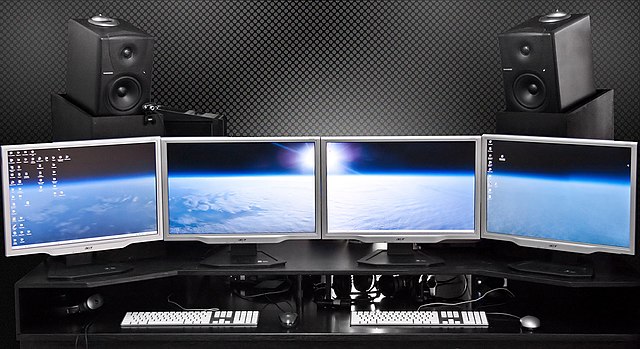A video wall is a special multi-monitor setup that consists of multiple computer monitors, video projectors, or television sets tiled together contiguously or overlapped in order to form one large screen. Typical display technologies include LCD panels, Direct View LED arrays, blended projection screens, Laser Phosphor Displays, and rear projection cubes. Jumbotron technology was also previously used. Diamond Vision was historically similar to Jumbotron in that they both used cathode-ray tube (CRT) technology, but with slight differences between the two. Early Diamond vision displays used separate flood gun CRTs, one per subpixel. Later Diamond vision displays and all Jumbotrons used field-replaceable modules containing several flood gun CRTs each, one per subpixel, that had common connections shared across all CRTs in a module; the module was connected through a single weather-sealed connector.
A video wall in television studio
Rear projection displays with narrow mullions.
Multi-monitor, also called multi-display and multi-head, is the use of multiple physical display devices, such as monitors, televisions, and projectors, in order to increase the area available for computer programs running on a single computer system. Research studies show that, depending on the type of work, multi-head may increase the productivity by 50–70%.
Two dual-monitor digital audio workstations
Analog Monitor Splitter for VGA cable
A Bloomberg Terminal
Multi-monitor setups in financial market making






